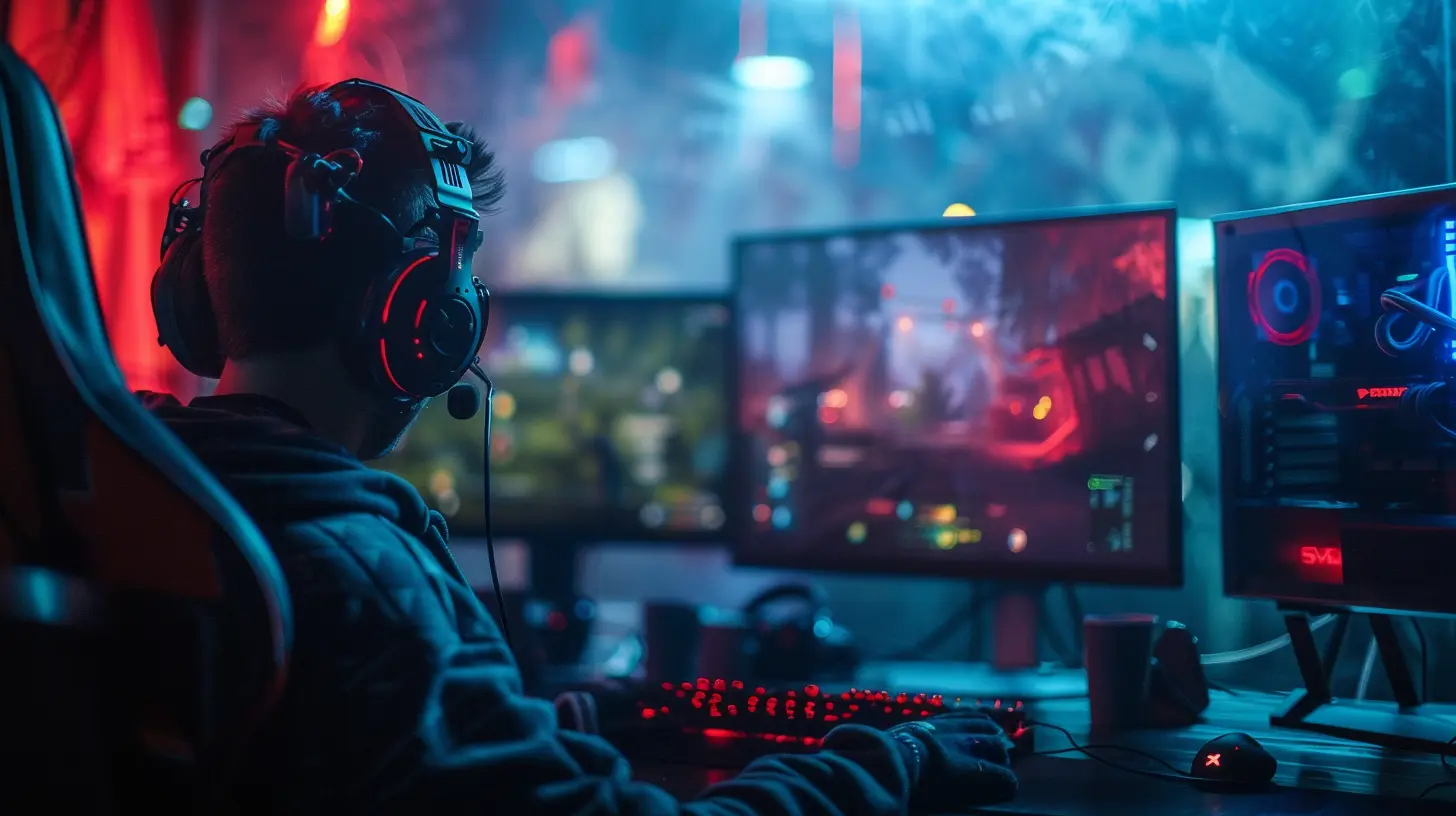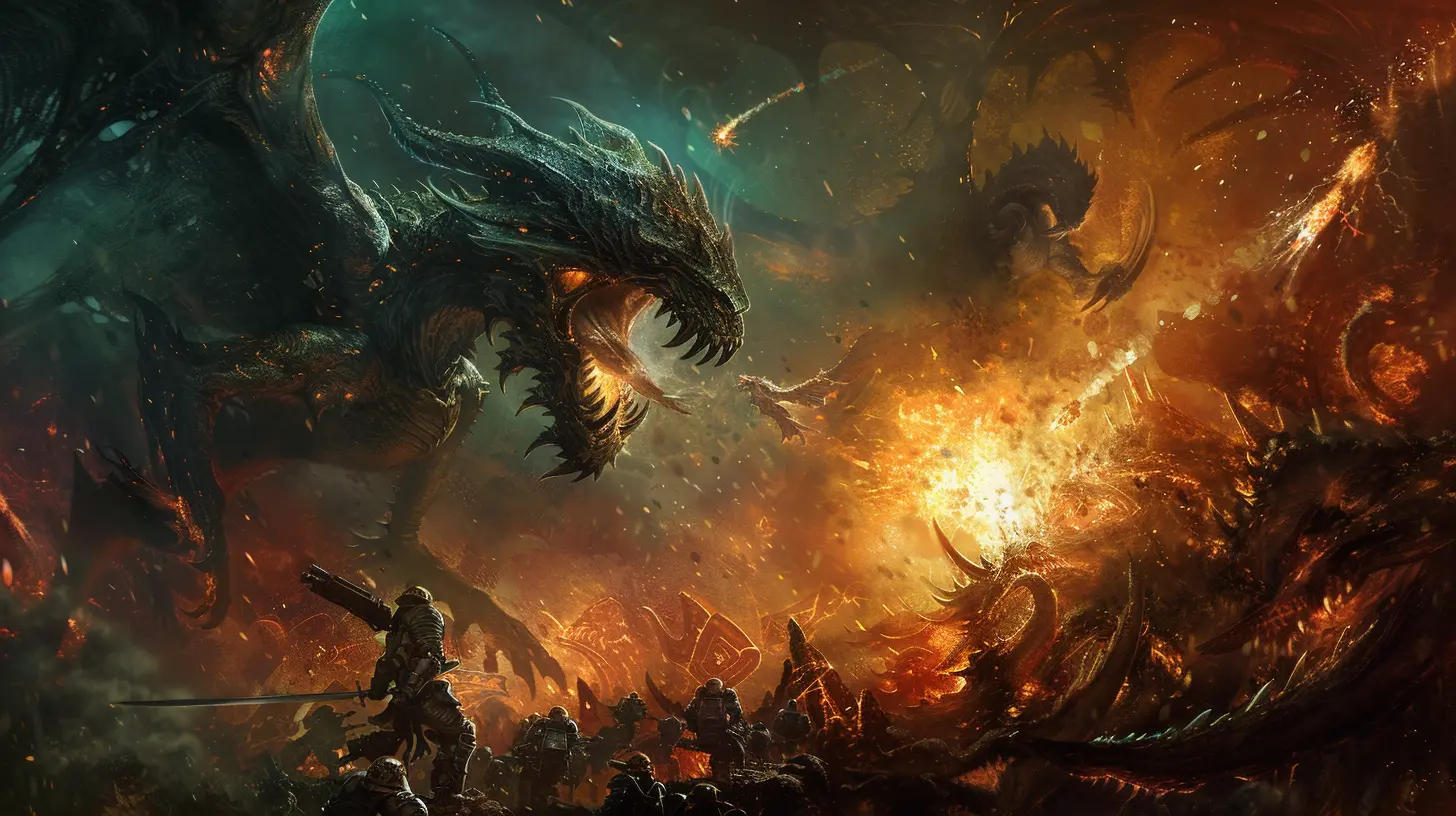Understanding System Requirements for Top PC Games
10 September 2025
Are you tired of downloading a brand-new PC game only to realize your computer just can’t handle it? Yep, I’ve been there, and it’s not fun staring at a stuttering screen when all you wanted was to dive into an epic quest or engage in some heart-pounding multiplayer action. But here’s the thing—understanding system requirements for PC games doesn’t have to feel like deciphering hieroglyphics. Let me help break it all down for you so you can be gaming-ready without the frustration.
Whether you’re a casual gamer or a die-hard enthusiast, knowing how system requirements work will save you time, money, and a whole lot of heartache. So, buckle up, and let’s demystify this techy jargon once and for all! 
What Are PC Game System Requirements?
Let’s start with the basics. At its core, system requirements are essentially the minimum and recommended specs your PC needs to run a specific game. Think of it like the ingredients list for your favorite recipe—it tells you exactly what you need to produce the best results.Games are designed with certain levels of performance in mind, so developers provide these requirements to ensure you know what kind of hardware and software setup is necessary. Some games need a beast of a machine to run smoothly, while others will happily chug along on your trusty old laptop.
The requirements for most games are divided into two categories:
- Minimum Requirements: This is the bare minimum your PC needs to run the game. Keep in mind, though, that you might have to sacrifice graphics quality or deal with occasional frame drops.
- Recommended Requirements: Here lies the sweet spot. Meeting these specs will give you the ultimate gaming experience with smoother gameplay and better visuals. 
Breaking Down System Requirements
System requirements usually include several key specs, and if you’re not a tech whiz, they might sound like gibberish. Don’t stress—I’ll explain each component so it makes sense.1. Processor (CPU): Your Computer’s Brain
The CPU (Central Processing Unit) is essentially the heart and soul of your PC. It determines how quickly your computer processes information. For gaming, the CPU is crucial because it handles instructions like AI behavior, physics calculations, and processing game mechanics.- Minimum: Dual-core processors (e.g., Intel Core i3, AMD Ryzen 3) are usually sufficient for older or less demanding games.
- Recommended: Quad-core or higher processors (e.g., Intel Core i5/i7, Ryzen 5/7) deliver better performance for modern AAA games.
Think of your CPU like the chef in a kitchen. A fast chef means the food (or in this case, data) gets prepped and served more efficiently.
2. Graphics Card (GPU): The Visual Mastermind
When it comes to gaming, your GPU (Graphics Processing Unit) is the MVP. It’s responsible for rendering all the high-resolution textures, lighting effects, and explosions that make your games look stunning.- Minimum: A lower-tier dedicated GPU like NVIDIA GTX 1050 or AMD Radeon RX 560 will handle simpler games.
- Recommended: Modern GPUs like NVIDIA RTX 3060 or AMD RX 6700 XT are great for the latest blockbusters with ray tracing and ultra settings.
Your GPU is like an artist painting a masterpiece. A better GPU equals more detailed visuals and smoother gameplay.
3. RAM: Your PC’s Short-Term Memory
RAM (Random Access Memory) is your PC’s temporary storage that the games use to load assets and process data on the fly. The more RAM you have, the better your system can multitask without slowing down.- Minimum: 8GB of RAM is the standard for gaming, but it’s the bare minimum for newer titles.
- Recommended: 16GB or more for a smooth experience, especially if you’re running background applications like Discord or OBS while gaming.
Picture RAM like your desk. A bigger desk means you can spread out your work without feeling cluttered.
4. Storage: SSD vs. HDD
Games are getting massive these days, so having enough storage is critical. Plus, the type of storage you use can drastically affect load times.- Minimum: A traditional HDD (Hard Disk Drive) will work, but expect longer loading screens.
- Recommended: SSDs (Solid State Drives) are way faster and will make your gaming experience much snappier.
Think of an SSD as a sports car and an HDD as an old pickup truck. Both can get you to the same destination, but one does it much faster.
5. Operating System (OS)
Most modern games are designed to run on the latest versions of Windows, though some are also optimized for Linux or macOS.- Minimum: Windows 10 (64-bit) is pretty much the standard now.
- Recommended: Stay updated with the latest OS patches to avoid compatibility issues.
Your OS is like the foundation of a house. If it’s outdated or falling apart, everything else gets wobbly.
6. DirectX: The Behind-the-Scenes Hero
DirectX is a collection of APIs (application programming interfaces) that help your game communicate with your hardware. Most PC games list a specific DirectX version as a requirement.- Minimum: DirectX 11 is required for many games.
- Recommended: DirectX 12 offers better performance and graphics optimizations for newer titles.
Think of DirectX as the translator between your game and your PC. A more advanced translator means fewer misunderstandings.
7. Connectivity: Internet Speeds
For online multiplayer games, your internet connection can make or break your experience. Nobody likes lag, right?- Minimum: A stable connection of at least 5 Mbps should suffice for casual online play.
- Recommended: 25 Mbps or higher ensures a smoother experience, especially if you’re streaming.
Your internet connection is like the pipeline delivering water to your house. A bigger pipeline means faster flow and no interruptions. 
Why Do System Requirements Vary So Much?
Ever wonder why some games run perfectly fine on old machines while others demand the latest hardware? It all boils down to how the game is designed.- Game Complexity: Open-world games like Cyberpunk 2077 or Red Dead Redemption 2 require more resources because they’re jam-packed with detailed environments and dynamic systems.
- Optimization: Some developers do a fantastic job of optimizing their games to run smoothly even on low-end PCs (shoutout to Minecraft), while others might push the envelope with higher-end requirements.
- Graphics Fidelity: Let’s face it—stunning visuals come at a cost. Games with ray tracing, realistic textures, and lifelike animations need more horsepower to shine. 
Tips for Assessing System Requirements
Okay, so now you know the basics, but how do you actually evaluate whether your PC can handle a new game? Here’s a step-by-step guide:1. Compare Your Specs: Cross-check your PC’s hardware with the game’s minimum and recommended requirements. You can find your specs by searching "System Information" on Windows.
2. Use Online Tools: Websites like Can You RUN It? make this process super easy. Just let the tool analyze your hardware and compare it with the game’s specs.
3. Don’t Neglect Future-Proofing: If you’re upgrading your PC, aim for hardware that exceeds recommended requirements so you’re ready for future launches.
4. Prioritize GPU & CPU: If you’re on a budget, focus on upgrading your GPU and CPU first. These two components have the biggest impact on gaming performance.
Final Thoughts
Understanding system requirements for PC games might seem overwhelming at first, but trust me, once you get the hang of it, it’s like second nature. Knowing your hardware and how it stacks up against a game’s specs is the key to ensuring smooth gameplay and avoiding disappointment.Remember, gaming doesn’t have to burn a hole in your wallet. There are plenty of amazing games that run just fine on mid-range or older setups. Ultimately, it’s all about striking the right balance between performance and budget—so you can focus on what’s really important: having fun!
all images in this post were generated using AI tools
Category:
System RequirementsAuthor:

Lucy Ross
Discussion
rate this article
1 comments
Corin Ward
Master the requirements; elevate your gaming experience today!
September 18, 2025 at 2:46 AM

Lucy Ross
Thank you! Understanding system requirements is key to enhancing your gaming experience. Happy gaming!


